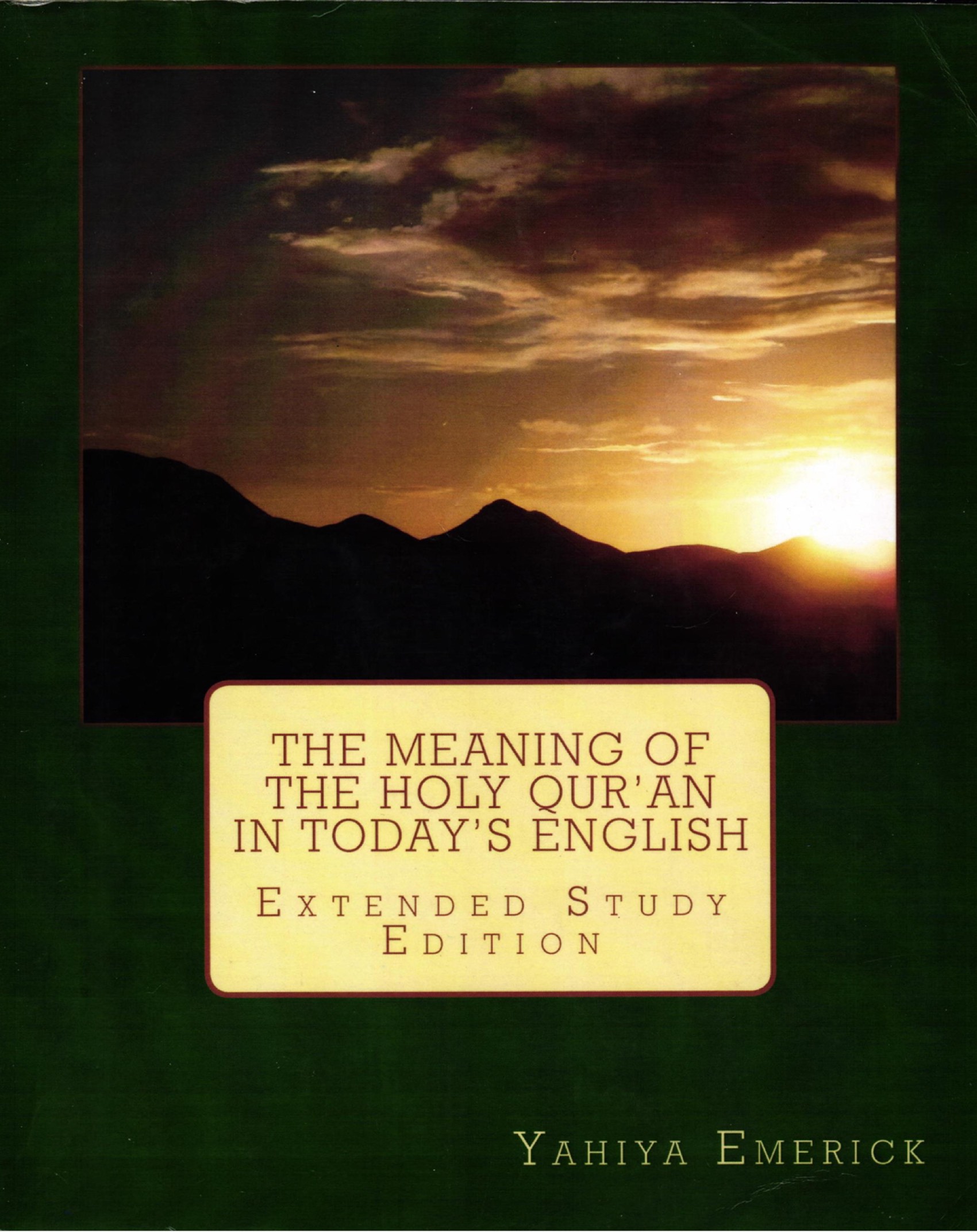THE MEANING OF THE HOLY QURAN IN TODAY'S ENGLISH (EXTENDED STUDY EDITION)
Summary of The Meaning of the Holy Qur’an in Today’s English (Extended Study Edition) by Yahiya Emerick
Yahiya Emerick’s The Meaning of the Holy Qur’an in Today’s English (Extended Study Edition) is a modern English translation and commentary of the Qur’an, designed to provide clarity, accessibility, and historical context for contemporary readers. This edition aims to present the message of the Qur’an in a literary, engaging, and explanatory format, integrating classical Islamic scholarship with a modern understanding.
⸻
Key Features and Themes
1. A Modern, Readable Translation
• Emerick sought to eliminate archaic and difficult English (often found in earlier translations influenced by King James Bible English) and instead provide a clear and fluid translation.
• He incorporates contractions and contemporary sentence structures to make the text accessible to modern readers while maintaining the eloquence of the original Arabic text.
2. Historical and Cultural Context
• The book emphasizes the historical and cultural background of Prophet Muhammad (PBUH) to help readers understand the context of the revelations.
• Readers are guided through the socio-political landscape of 7th-century Arabia, including details about the Meccan and Medinan periods of the Qur’anic revelation.
• Comparisons with other religious scriptures and historical texts help readers see the continuity between Islamic teachings and previous Abrahamic traditions.
3. Comprehensive Commentary (Tafseer)
• The commentary draws from classical Islamic scholars, including Ibn Kathir, Al-Ghazali, Zamakhshari, Ibn Taymiyyah, and Fakhr al-Din al-Razi.
• Offers multiple interpretations of verses where scholarly opinions differ, giving readers a balanced view.
• Explains legal, moral, and spiritual aspects of Qur’anic verses in an engaging and structured way.
4. Thematic Organization and Explanation
• The Qur’an is presented with grouped passages and paragraph-style formatting, making it easier for readers to follow themes and narratives.
• Detailed discussions on prophetic traditions (Hadith), biblical figures in Islam, and key Islamic theological concepts.
• Specific sections address topics such as worship, divine justice, afterlife, morality, and law.
5. Understanding Prophethood and Revelation
• Provides a biographical overview of Prophet Muhammad’s life, emphasizing his role as a messenger and reformer.
• Discusses the progression of revelation, showing how different surahs (chapters) addressed issues over time.
• Highlights parallels between Qur’anic teachings and earlier Abrahamic scriptures.
6. Addressing Common Misconceptions
• The commentary addresses misinterpretations of Qur’anic teachings, particularly those spread by critics and extremist misreadings.
• Clarifies verses often taken out of context regarding topics such as jihad, gender roles, and interfaith relations.
⸻
Conclusion
This extended study edition of the Qur’an translation offers historical depth, theological insight, and accessibility to both Muslim and non-Muslim readers. It provides a bridge between classical interpretations and contemporary understanding, making the Qur’an more approachable and relatable while maintaining scholarly rigor.
